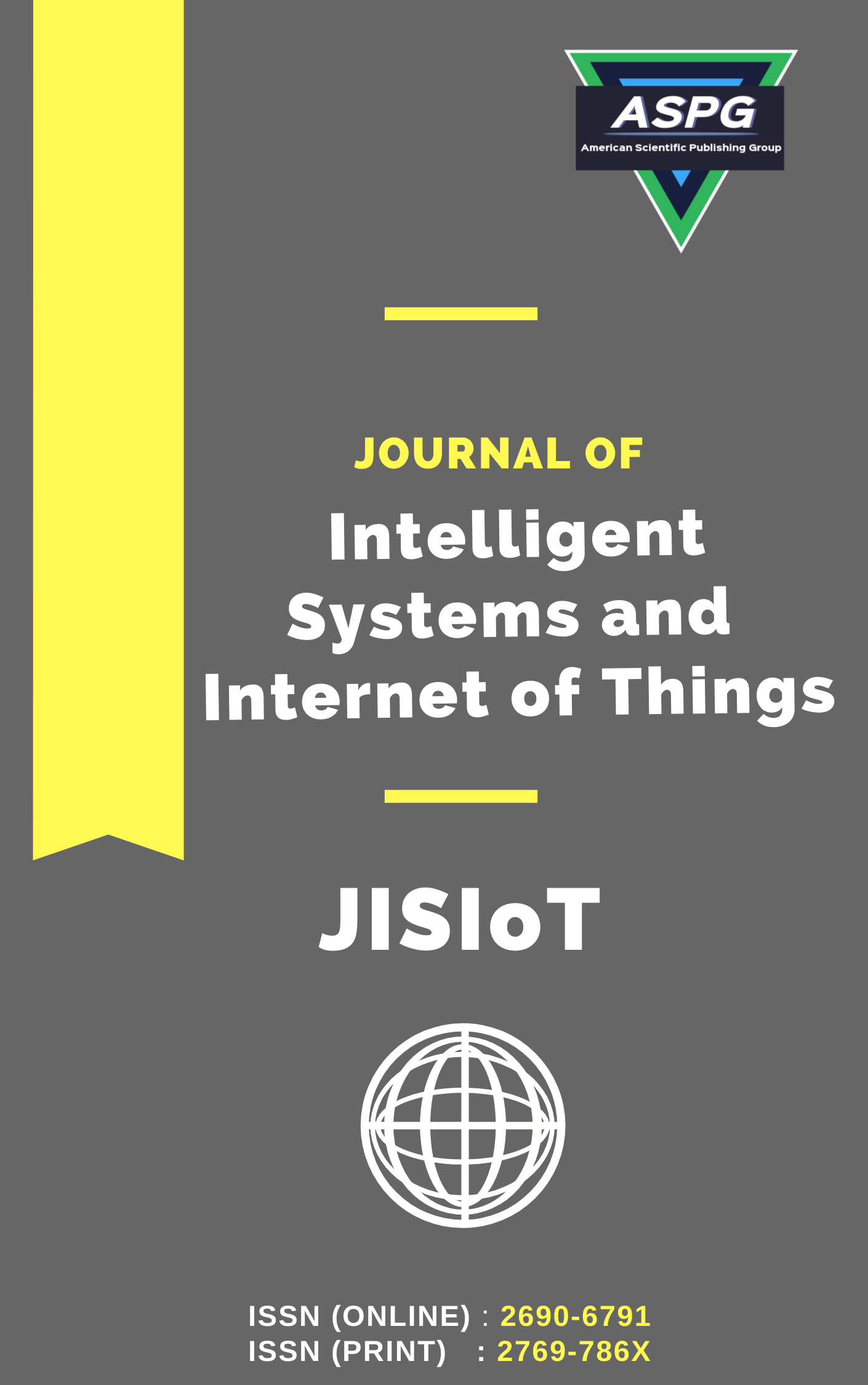

Volume 18 , Issue 1 , PP: 288-297, 2026 | Cite this article as | XML | Html | PDF | Full Length Article
L. Pallavi 1 * , Gattu Shravani 2 , J. Sirisha Devi 3 , Bandaru Satya Lakshmi 4 , M. Pushpalatha 5 , S. Gopinath 6 , M. Rajesh 7
Doi: https://doi.org/10.54216/JISIoT.180122
Temperature increases in metropolitan areas are referred to as urban heat island (UHI) effect. In recent decades, urbanization as well as dramatic increase in population of cities have exacerbated the impact of UHI. The uneven development and growth of the metropolis will lead to an uneven rate of temperature growth in the corresponding area. This work proposes a new machine learning approach based on temperature pattern analysis to determine the rate of deforestation, representing the diversity of geographical regions. The proposed model collect temperature pattern based deforestation data as well as processed for noise removal and normalization. Then this data features has been extracted as well as classified utilizing kernel principal fuzzy reinforcement NN with variational Gaussian encoder markov model. Experimental analysis is carried out in terms of random accuracy, mean precision, AUC, normalized co-efficient, F1 score. Proposed method mean precision was 94%, normalized co-efficient was 97%, AUC was 95%, random accuracy 98%, F1-score 93%. The most important land use categories causing LST increases were determined by analyzing the landscape composition at the class level.
Urban heat island , Encoder markov model , Fuzzy reinforcement , Geographical region diversity , Gaussian encoder
[1] R. Sun, F. Zhao, C. Huang, H. Huang, Z. Lu, P. Zhao, and R. Meng, "Integration of deep learning algorithms with a Bayesian method for improved characterization of tropical deforestation frontiers using Sentinel-1 SAR imagery," Remote Sensing of Environment, vol. 298, p. 113821, 2023.
[2] F. Dias, N. Suhadolnik, H. Camargo, and S. Da Silva, "Predicting the pulse of the Amazon: Machine learning insights into deforestation dynamics," Journal of Environmental Management, vol. 362, p. 121359, 2024.
[3] S. Srivastava and T. Ahmed, "DLCD: Deep learning-based change detection approach to monitor deforestation," Signal, Image and Video Processing, pp. 1-15, 2024.
[4] C. Singha, K. C. Swain, A. Moghimi, F. Foroughnia, and S. K. Swain, "Integrating geospatial, remote sensing, and machine learning for climate-induced forest fire susceptibility mapping in Similipal Tiger Reserve, India," Forest Ecology and Management, vol. 555, p. 121729, 2024.
[5] D. A. Subhahan and C. V. Kumar, "Deforestation rate estimation using crossbreed multilayer convolutional neural networks," Multimedia Tools and Applications, pp. 1-27, 2024.
[6] B. Haq, M. A. Jamshed, K. Ali, B. Kasi, S. Arshad, M. K. Kasi, and M. Ur-Rehman, "Tech-Driven Forest Conservation: Combating Deforestation With Internet of Things, Artificial Intelligence, and Remote Sensing," IEEE Internet of Things Journal, 2024.
[7] D. D. O. Maionchi, J. G. D. Silva, F. A. Balista, W. A. M. Junior, S. R. D. Paulo, I. J. D. Paulo, and M. S. Biudes, "Estimating hourly air temperature in an Amazon-Cerrado transitional forest in Brazil using Machine Learning regression models," Theoretical and Applied Climatology, vol. 155, no. 8, pp. 7827-7843, 2024.
[8] F. R. da Silva, S. F. Câmara, F. R. Pinto, F. J. da Costa, L. M. de Freitas, J. G. C. de Oliveira Júnior, and M. O. Soares, "Machine learning application to assess deforestation and wildfire levels in protected areas with tourism management," Journal for Nature Conservation, vol. 74, p. 126435, 2023.
[9] R. Manoharan, "Improving Security and Performance in Chaotic Optical Communication via Real-Time Pilot Signal Processing Techniques," IETE Journal of Research, pp. 1-9, 2025.
[10] M. Rajesh, S. Ramachandran, K. Vengatesan, S. S. Dhanabalan, and S. K. Nataraj, "Federated Learning for Personalized Recommendation in Securing Power Traces in Smart Grid Systems," in IEEE Transactions on Consumer Electronics, vol. 70, no. 1, pp. 88-95, Feb. 2024, doi: 10.1109/TCE.2024.3368087.
[11] B. Mishra, S. Panthi, S. Poudel, and B. R. Ghimire, "Forest fire pattern and vulnerability mapping using deep learning in Nepal," Fire Ecology, vol. 19, no. 1, p. 3, 2023.
[12] M. Zhang, A. A. Kafy, P. Xiao, S. Han, S. Zou, M. Saha, and S. Tan, "Impact of urban expansion on land surface temperature and carbon emissions using machine learning algorithms in Wuhan, China," Urban Climate, vol. 47, p. 101347, 2023.
[13] S. Ullah, M. Abbas, and X. Qiao, "Impact assessment of land-use alteration on land surface temperature in Kabul using machine learning algorithm," Journal of Spatial Science, pp. 1-23, 2024.
[14] J. Kang, B. Zhang, and A. Dang, "A novel geospatial machine learning approach to quantify non-linear effects of land use/land cover change (LULCC) on carbon dynamics," International Journal of Applied Earth Observation and Geoinformation, vol. 128, p. 103712, 2024.
[15] T. S. Arulananth, P. G. Kuppusamy, R. K. Ayyasamy, S. M. Alhashmi, M. Mahalakshmi, et al., "Semantic segmentation of urban environments: Leveraging U-Net deep learning model for cityscape image analysis," PLOS ONE, vol. 19, no. 4, p. e0300767, 2024. doi: 10.1371/journal.pone.0300767.